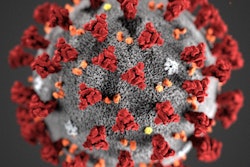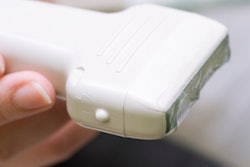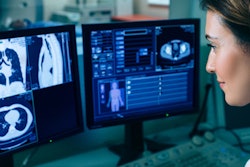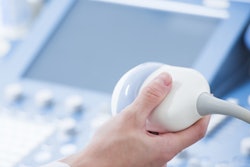
Daily lung ultrasound scans reduced the need for other imaging methods in COVID-19 patients with acute respiratory failure (ARD), reducing healthcare staff exposure to the virus, according to the findings of a study published on May 6 in Ultrasound in Medicine & Biology.
Attending physicians at an intensive care unit (ICU) in Italy adopted an ultrasound-first mentality for patients with the novel coronavirus. As a result, fewer patients with COVID-19 needed to be moved to the radiology department for CT scans, reducing virus exposure for radiologists, technologists, and other healthcare professionals.
"Lung ultrasound gained a leading position in the last year as an imaging technique for the assessment and management of patients with acute respiratory failure," wrote the authors, led by Dr. Silvia Mongodi, PhD, from the anesthesia and intensive care department at San Matteo Hospital in Pavia. "In coronavirus disease 2019, its role may be of further importance because it is performed bedside and may limit chest x-ray and the need for transport to radiology for computed tomography scans."
Even before the COVID-19 pandemic, clinicians at the hospital's ICU used lung ultrasound in combination with other imaging methods for the daily management of patients with ARD. So when the ICU got its first patient with COVID-19 on February 21, the physicians knew they wanted to rely on ultrasound for daily management.
"The aim of this self-imposed limitation was to minimize transport of COVID-19 patients to the radiology department, reduce the number of bedside [chest x-rays], and therefore reduce the exposure of healthcare professionals," the authors wrote.
Each day, the ICU physicians performed a 12-area lung ultrasound examination on patients with ARD, although they could still order CT or chest radiography if they felt it was necessary for patient care. They used their findings to guide treatment strategy, identify complications, and monitor lung aeration.
The authors then compared the prevalence of chest x-rays and CT scans performed during their peak COVID-19 period (February 22 to March 22) with the same time frame just one year prior. The ICU reached 100% capacity of patients with COVID-19 on March 6, the authors noted.
The percentage of ICU patients with ARD who had at least one chest x-ray was about the same in both 2019 and 2020. However, the median number of chest x-rays performed decreased from three in 2019 to just one in 2020. Similarly, patients with at least one CT scan decreased from 31.8% of patients in 2019 to just 3.6% in 2020.
"Only two COVID-19 patients underwent CT, one twice," the authors wrote. "Similar results are obtained when considering the median number of CT scans per patient and per patient-bed day."
The authors concluded that their findings demonstrated the self-imposed limitation to first use lung ultrasound scans reduced the movement of infected patients around the hospital. The decision likely reduced exposure at the radiology department and saved personal protective equipment, the authors noted.
"Even in the context where use of conventional chest imaging had already been optimized by the daily practice of [lung ultrasound], a self-imposed [lung ultrasound]-based approach could further reduce the number of conventional exams," the authors wrote.



















